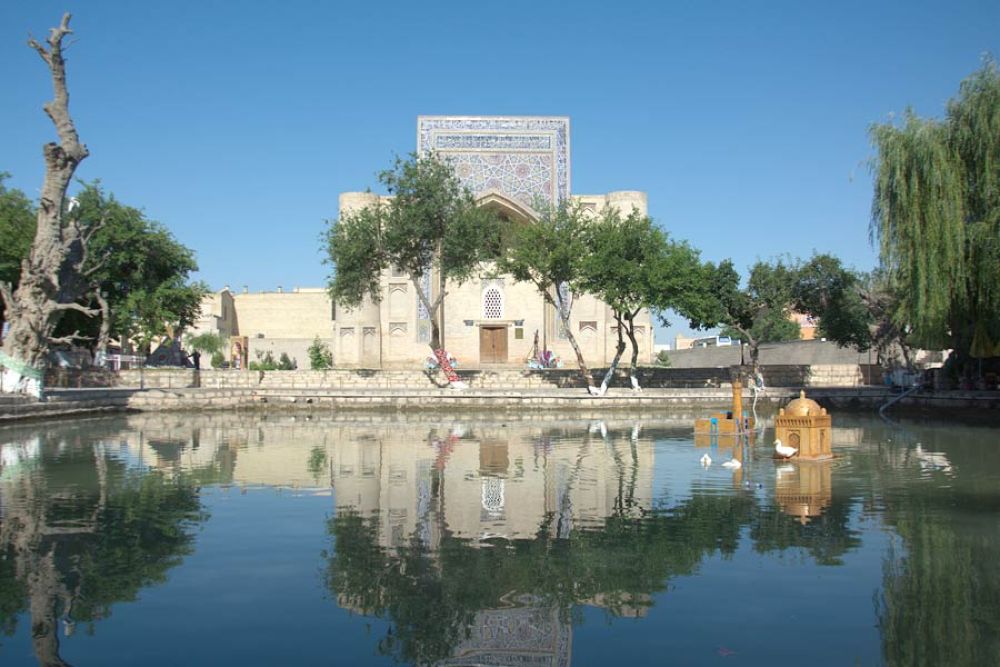

The Lyabi-Hauz Ensemble, located in the historical city of Bukhara in Uzbekistan, is one of the most significant and well-preserved examples of Islamic architecture in Central Asia. Its name, 'Lyabi-Hauz', translates to 'by the pool', referring to the central water reservoir around which the ensemble is grouped. This impressive and serene complex dates back to the 16th and 17th centuries and has always been one of the central hubs of social and cultural activities in the city.
The ensemble consists of several key historical structures that have played a pivotal role in the academic and religious life of Bukhara, which includes the Kukeldash Madrasah, the largest in the city, built in 1568-1569 by Abdullah Khan. Additionally, the Nadir Divan-Begi Madrasah, initially constructed as a caravanserai but later repurposed into a madrasah, and the Nadir Divan-Begi Khanaka, have enriched the historical significance of the entire complex.
Tourism at the Lyabi-Hauz Ensemble began to flourish toward the end of the 20th century, when Uzbekistan gained independence and started opening up to international tourism. The ensemble's combination of lush greenery, calming waters, and intricate architectural detail capture the essence of Bukistan's past, making it a major attraction for tourists interested in the Silk Road history and Islamic architecture.
Recent trends in tourism at the Lyabi-Hauz Ensemble show a shift towards more experiential and educational visits. Tourists are no longer content with passively viewing the monuments; they want to immerse themselves in the culture, history, and daily life of Bukhara. This has led to an increase in offerings such as traditional Uzbek music and dance performances, craft workshops, and culinary tours that include tasting local dishes in the tea houses surrounding the hauz.
Eco-tourism is another growing trend in the area, as the Lyabi-Hauz is now frequently included in itineraries that emphasize sustainable travel practices, highlighting Uzbekistan’s commitments to preserving its cultural landmarks. Furthermore, modern tourism initiatives, such as the restoration and conversion of old madrasah rooms into boutique hotels and guesthouses, allow visitors to stay near the ensemble, providing them with a fully immersive historical experience.
With the inclusion of Bukhara on the UNESCO World Heritage List, there has been a concerted effort to preserve the Lyabi-Hauz Ensemble's integrity, which in turn supports sustainable tourism growth. This endeavor has ensured that tourists can enjoy the site's timeless beauty and the city's ancient history for years to come.
In recent years, the Uzbekistan government has eased visa restrictions, leading to an increase in tourists from around the world flocking to historic sites such as Lyabi-Hauz Ensemble. In response, the city has developed multilingual guides and informational plaques to cater to international visitors, making the ensemble more accessible and informative.
Overall, the Lyabi-Hauz Ensemble is not just a pillar of tourism in Bukhara but is also an enduring symbol of the city's rich and diverse history, continuing to attract and fascinate scholars, architects, historians, and casual tourists alike.